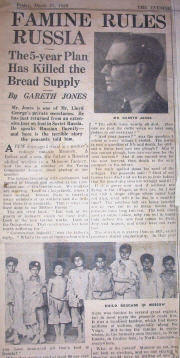Autumn 2012 Flashback
Category: by sophie engström, photography
Tags: Holodomor, Lviv
Found an undeveloped film from last Autumn, including Holodomor celebrations in L’viv and Wine and Cheese Fest… so here we go.
Traces of light. Holodomor 2012.
Category: by sophie engström, photography
Tags: Holodomor, Lviv
Found an undeveloped film from last Autumn, including Holodomor celebrations in L’viv and Wine and Cheese Fest… so here we go.
Traces of light. Holodomor 2012.
Category: by sophie engström, ukraine
Tags: Holodomor
On a happy day like New Year it is perhaps not usual to think on such dreadful past as the Holodomor. But one of my wishes for the new year is that at least Sweden will accept Holodomor as genocide. (A pervious posing in Swedish about this).
I have used Ilford3200 for this pictures.
Category: guests
Tags: gulag, Holodomor, Katyn, marketing, Stalin, stalinism
This is an open letter from the blog Stop Robbialac.
Recently, a Portuguese painting company, Robbialac, has created a brand new color, with a name of “Vermelho Estaline” (Red Stalin). Decision of its own management and creative department can be verified in company’s Web products catalog (page number 8, right side, down of the page).
Personally, I have consider this decision as a cynic and sinister way to obtain commercial gains based on inhumane suffering, blood and tears of millions de citizens of Central and East Europe, Central Asia and Caucasus.
Also, I have deeply doubt, that Robbialac managements hasn’t no information about horrors of Ukrainian Holodomor, massacre of Polish officers and civilians in Katyn or about system of Soviet concentration camps, generically known as a GULAG.
Based in all this data, I assume me personal responsibility and duty to not buying any Robbialac products, till a company will take of the market this genocidal paint and will publically ask for forgiveness, to millions of victims of Stalinist tyranny in Europe or in any place in the World.
If you are agreeing with my position, please, contact Robbialac painting to show to the company your own civic position:
robbialac@robbialac.pt
Telephone in Portugal: + 351 21 994 77 00
Fax in Portugal: +351 21 994 77 94
Green Line in Portugal: +351 800 200 725.
Permanent address of this news
http://stoprobbialac.blogspot.com/2010/04/stop-robbialac-stalinism.html
Best regards,
Jest Nas Wielu,
Citizen & Blogger,
Maputo, Mozambique
About this civic campaign on CNN
Category: by sophie engström, ukraine
Tags: BBC, cambridge ukrainian studies, Gareth Jones, great famine, Holodomor, new york times, Stalin, Ukraine
Gareth Jones is perhaps a forgotten name for many, but Cambridge Ukrainian Studies highlighted his diaries in November 2009 and you can read more about the exhibition here and see a clip from BBC here!
Gareth Jones was a Welsh journalist that was the first to publish articles about Holodomor in Western media. He alos claimed that the Soviet regime and the 5-year plans deliberately made the suffering worse. This lead to many accusations from Moscow, but also from other journalists. Even New York Times called him a liar. His diaries, where he noted everything that he saw when he travelled through Ukraine during 1930s and the time for the Holodomor, was the of course one very important part of the exhibition that Cambridge Ukrainian studies organized.

Category: by sophie engström, ukraina, ukraine
Tags: Anders Wassén, Holodomor, Medicinhistoriska museet, russia, Stalin
Appellationsdomstolen i Kyiv har i dag startat förhandlingar inför den väntade rättegången om hungersnöden 1932-33, Holodomor, var ett folkmord eller inte. Den sittande presidenten, Viktor Jusjenko, har engagerat sig mycket i frågan. En förundersökning som offentliggjordes i mars 2009 har visat att flera av de avgörande delarna för att förvärra hungersnöden troligen skedde med Josef Stalins goda minne och aktiva medverkan. Förundersökningen har offentliggjort 3685 tidigare hemligstämplade dokument från Sovjettiden. Flera av dessa, ska enligt uppgift, vara undertecknade av Stalin själv. Genom dokumenten har man även lyckats lokalisera 933 massgravar.
Hungernöden uppstod då Sovjetunionen inledde den avgörande fasen av kollektiviseringen av jordbruket. Dokumenten visar att den förvärrades av att det upprättades en armé som såg till att folkförflyttningar inte kunde ske samt att statsapparaten såg till att förhindra att livsmedel och andra förnödenheter kom in till regionen. Man räknar med att ungefär 7 till 10 miljoner dog under hungersnöden. 4 miljoner av de döda var barn.

På Medicinhistoriska museet i Göteborg pågår det en liten utställning om hur hungersnöden drabbade Ryssland under inbördeskriget 1918 -1922. 1921 reste göteborgsläkaren Anders Wassén till Samara i Ryssland i Röda Korsets regi. Han lät då smala burkar med exemple på vad den desperata befolkningen försökte äta för att stilla sin desperata hunger. Utställningen innehåller även ett gediget fotografisk dokumentation av Wassén. Ukraina drabbades även under inbördeskriget av hungersnöd, men inte tillnärmelsevis så omfattande som den som skedde på 1930-talet.